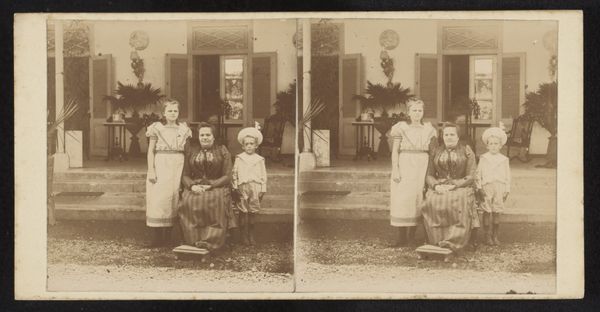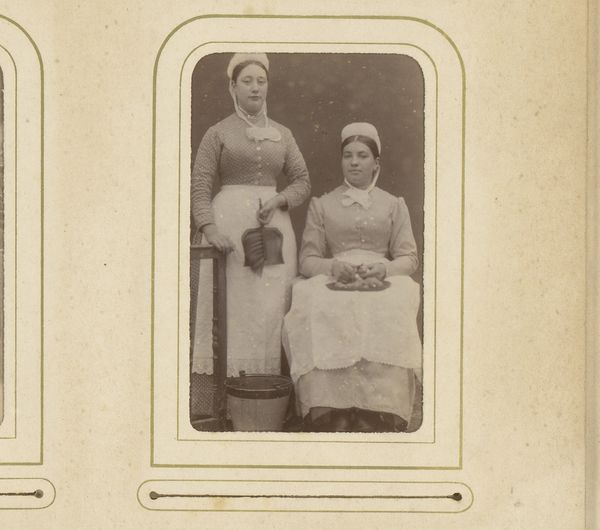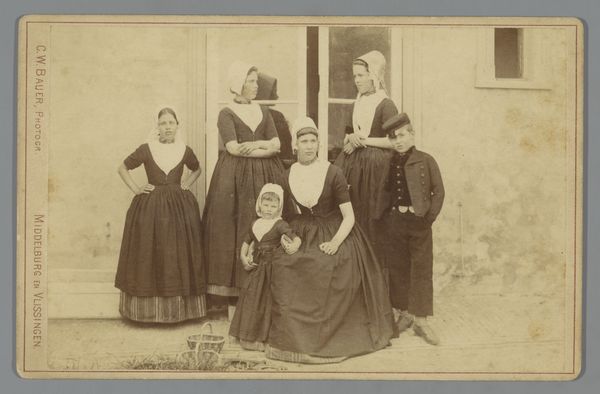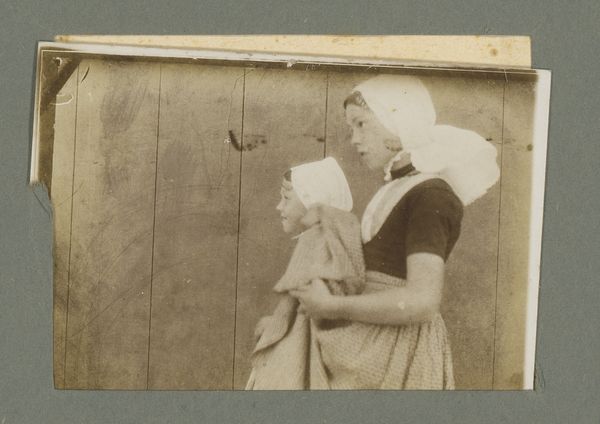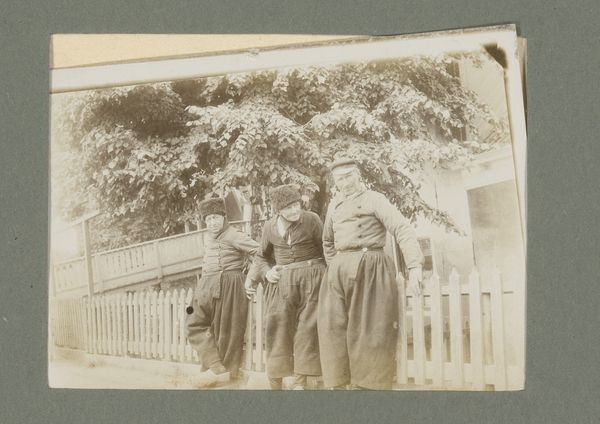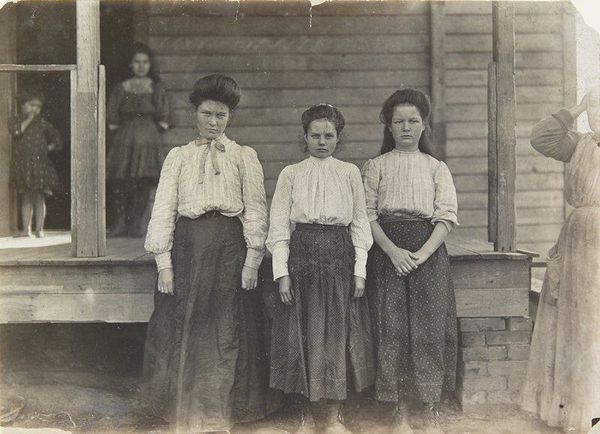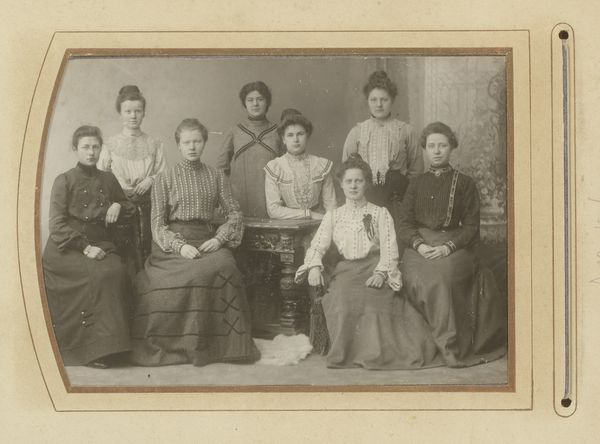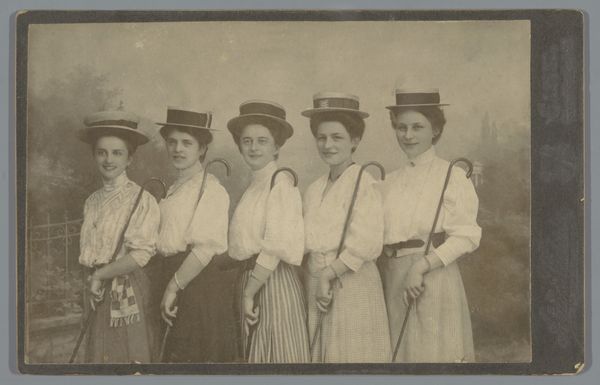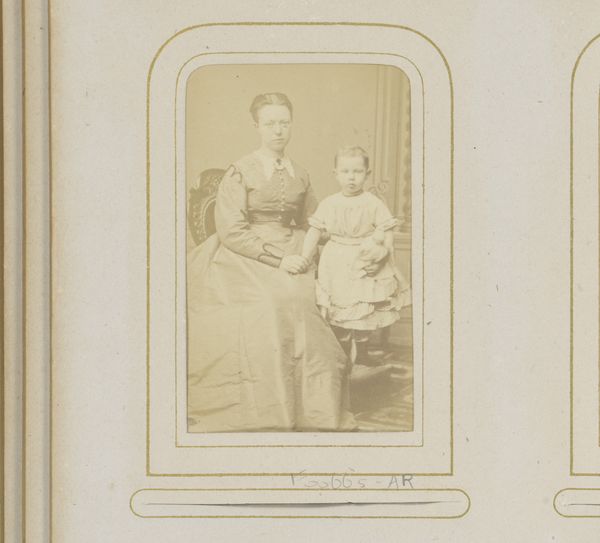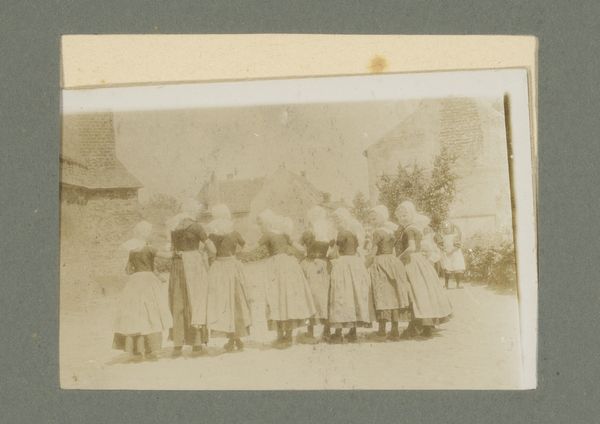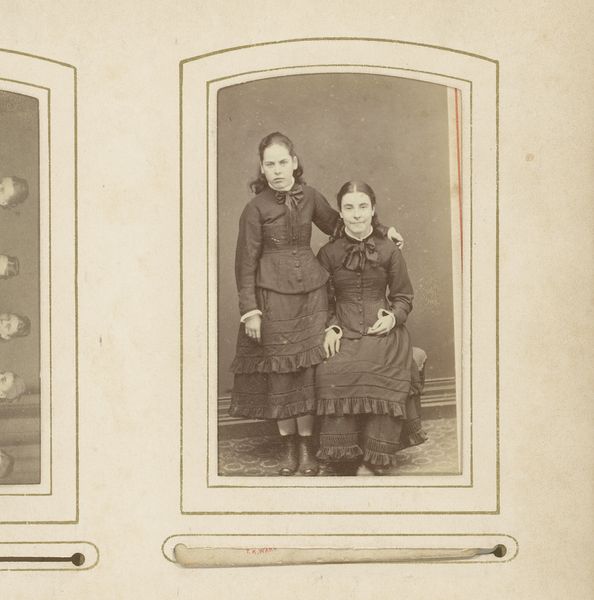
photography
#
portrait
#
photography
#
genre-painting
#
realism
Dimensions: height 73 mm, width 99 mm
Copyright: Rijks Museum: Open Domain
Editor: Here we have an old photograph titled “Portret van drie meisjes in klederdracht,” or “Portrait of three girls in traditional costume,” dated sometime between 1920 and 1940, medium photography, by G. Hidderley. I notice a somber tone, almost… a weariness in the girls’ expressions. What can you tell me about the context of this portrait? Curator: This photograph offers us a poignant glimpse into the lives of young girls, likely in the Netherlands, during a period of significant social change. These traditional costumes speak to cultural identity and perhaps even resistance against encroaching modernity. Notice how their postures, though still, convey a quiet strength, reflecting the roles these young women were expected to fulfill within their communities. Have you considered how their gender and age intersect with the themes of cultural preservation present in this work? Editor: I hadn’t really thought of it that way, no. I guess I was seeing it more as an aesthetic choice – photographing people in traditional clothing is like preserving a moment in time. But thinking of their roles…were they resisting a pressure to leave this behind? Curator: Exactly. Photography here is a political act, not simply about preserving tradition. It's about visibility. It's about acknowledging that while modernity strides forward, other ways of being persist and demand to be seen and valued. These girls aren’t just wearing costumes; they are embodying a cultural heritage that faced displacement and required conscious effort to maintain. It becomes a statement on identity. What does this photograph make you consider in terms of your own cultural identity, your relationship to history, gender, and tradition? Editor: I never would have seen all that just from looking! Now it really speaks to me in a new way. It is a beautiful snapshot of people expressing their cultural identity through simple means. Curator: Indeed. Art like this asks us to consider who is seen, who is not, and who has the power to shape that vision.
Comments
No comments
Be the first to comment and join the conversation on the ultimate creative platform.
